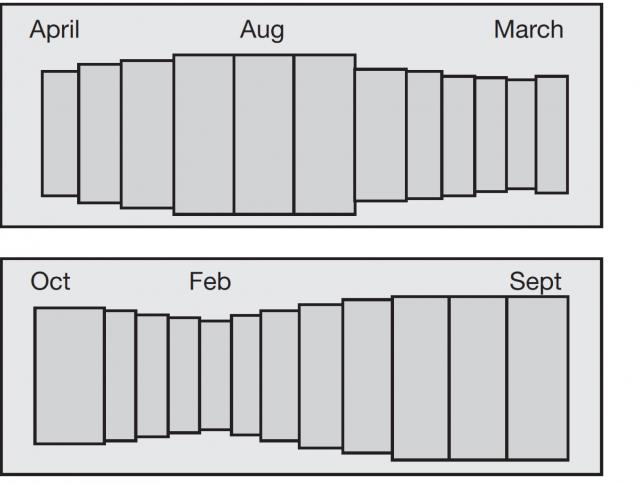Strategies to avoid tender wool
Genetics
Staple strength is a moderately heritable trait, and can be improved genetically by selecting animals with high staple strength. Staple strength has a close genetic association with the coefficient of variation in fibre diameter (CVD) which can be used for genetic selection. Genetic gains of up to 4N/ktex can be made over 10 years with no change in any other trait. These gains depend on the amount of selection pressure applied to staple strength and also on the other traits in the breeding program. Gains are cumulative and permanent.
Pasture quality
Better pastures can help reduce nutritional stress in summer and autumn. Maintaining a high percentage of subterranean clover, which offers nutritious burr, can offset the poor feed quality of dry grass. Where they can be grown successfully, blue lupins and lucerne are useful in improving summer and autumn nutrition. Crop stubbles or forage crops are also useful in maintaining liveweight and fibre diameter during early summer.
Time of shearing
Autumn shearing in WA can help reduce the problems caused by tender wool because the thinnest part of the fibre will be at the ends rather than the centre (see Figure 1). This reduces the proportion of mid-breaks thereby improving the wool’s processing performance. However, autumn shearing may result in more vegetable matter, body strike and pesticide residues than spring shearing.
If sheep are shorn in autumn, an active policy of reducing vegetable matter in the wool will usually be necessary. Without control of seed which can produce shive in the top (vegetable matter left in the wool), it may be uneconomical to shear in the autumn.
Spring-shorn sheep, on the other hand, have fewer problems with vegetable matter contamination of the fleece but have the thinnest part of the fibre in the centre which may increase tenderness.

